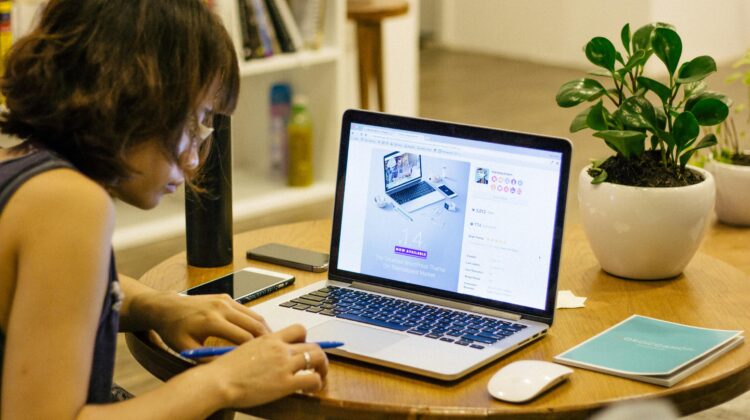Blended & Flexible Toolkit

Welcome to the FSE Blended and Flexible Toolkit, this series of articles is designed to reaffirm the basic principles behind Flexible and Blended Learning, what do we mean by these terms? How should they be implemented? How we can start to think about flexibility when designing learning materials and how to ensure we create flexible and accessible activities within our teaching. In the toolkit you will find an overview of some of the basic principles that you can start to apply to your teaching.

What is Blended and Flexible Learning
This article will cover the basic definitions of Blended and Flexible Learning, what it means in a pedagogical sense and what it means for us in the Faculty of Science and Engineering. We’ll also follow up with some very practical advice to make the materials , assessment and activities you develop a better fit for blended and flexible delivery.
What is Flexible learning ?
Flexible learning is an educational approach that leverages thoughtfully designed technologies, learning environments, and institutional policies to offer students personalised and engaging experiences. It empowers learners to make choices about how, what, when, and where they learn, accommodating their evolving needs, goals, and commitments throughout their academic journey. Framework for Flexible Learning | Advance HE
Flexible Learning and the Future of Work
The rapid advancement of digital tools, technologies, and artificial intelligence is transforming how and where we work and learn throughout our lives. In this evolving landscape, flexible learning plays a crucial role by equipping students to become independent, lifelong learners. It nurtures self-awareness, personal agency, and active learning strategies—skills essential for thriving in a dynamic and continuously changing work environment Framework for Flexible Learning | Advance HE
What is Blended Learning?
Blended learning is a pedagogical approach that combines traditional classroom teaching with online activities to enhance student engagement and flexibility. It’s important to note that, in a blended learning experience, the online component does not serve as a substitute for in-person interaction; instead, it complements and enhances the face-to-face experience. Blended learning models are underpinned by several theoretical frameworks and links to literature – including constructivism, social constructivism, situated learning theory and problem-based learning – and are grounded in the idea of learning as a partnership between teachers and students. There will also be plenty of practical tips on how to achieve this.
Why Blended and Flexible Learning Matters
Blended and flexible teaching and learning are essential to ensuring that all students—regardless of background, life stage, or location—can access a high-quality, inclusive, and future-ready education. This approach recognises that students’ needs, aspirations, and circumstances evolve over time. By offering a mix of synchronous and asynchronous learning, supported by an inclusive course design, we empower students to take control of their learning journey. https://www.manchester.ac.uk/about/teaching-and-learning-excellence/flexible-learning/
Crucially, this model embraces diversity by supporting different learning styles, cultural perspectives, and lifestyle challenges. Whether students are balancing work, family responsibilities, health needs, flexible learning provides the adaptability they need to succeed. It fosters a more inclusive academic environment where all learners feel seen, supported, and empowered.
This approach not only enhances academic success but also prepares students for a rapidly changing world of work that demands agility, creativity, and digital fluency. Ultimately, blended and flexible learning promotes lifelong learning, strengthens student engagement, and ensures that every learner has the opportunity to thrive in a dynamic, global society.
https://www.manchester.ac.uk/about/teaching-and-learning-excellence/flexible-learning
Transformation of Roles
With blended learning, we witness a transformation in the traditional roles within the educational environment. The teacher transitions from being the central source of knowledge to a facilitator and guide, who supports and encourages student exploration and engagement. The responsibility and ownership on learning shifts to the learner, who is tasked with taking an active role in their own learning journey.
Blended Learning at UoM
The University of Manchester is committed to blended learning and defines it as;
“A blend of on-campus, synchronous online and asynchronous online learning experiences that promote active learning and engagement for all students.”
This definition comes from the Getting the Blend Right framework(opens in a new tab), developed by a cross-faculty group of staff in July 2022, which sets the UoM approach to implementing blended learning. This approach will help us set the foundations to fully support a student body with a diverse range of needs and wants.
What Blended Learning Isn’t
Blended learning isn’t online learning and is not intended to ever replace in-person interaction, but rather enhance the face-to-face experience. Blended learning and online learning are two distinct approaches to teaching and learning, each with its unique characteristics.
Blended learning is an approach to education that combines online educational materials and opportunities for online interaction with traditional classroom-based methods. It requires the physical presence of both teacher and learner, with some elements of learner control over time, path or place.
What Blended Learning Might Look Like in Practice
Beyond Flexible Learning – practice guide | Advance HE
Other articles from the FSE Blended and Flexible Learning Toolkit


